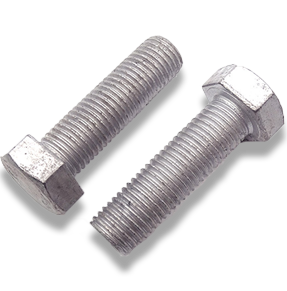

Understanding A325 Type 3 Bolts for Structural Applications and Their Characteristics
Nov . 27, 2024 09:50 Back to list
Understanding A325 Type 3 Bolts for Structural Applications and Their Characteristics
Understanding A325 Type 3 Bolts Characteristics, Applications, and Best Practices
A325 Type 3 bolts are a critical component within the realm of construction and structural engineering, recognized for their strength and versatility. These high-strength, heavy-duty fasteners play an essential role in the assembly of steel structures, ensuring that joints are secure and reliable. In this article, we will explore the characteristics, applications, and best practices for using A325 Type 3 bolts.
Characteristics of A325 Type 3 Bolts
A325 bolts are standardized under the specifications set by the American Society for Testing and Materials (ASTM). These bolts are typically made from carbon steel and are designed to be used in structural applications that require high strength. The Type 3 classification of A325 bolts specifically refers to a bolt that has been quenched and tempered, which enhances its mechanical properties, making it suitable for use in environments that may require very high corrosion resistance.
The A325 Type 3 bolts are often available with either a plain finish or a hot-dip galvanized coating. The galvanized option provides a layer of protection against corrosion, making these bolts ideal for outdoor or marine applications where they may be exposed to moisture and corrosive elements over time. Furthermore, the mechanical properties of A325 Type 3 bolts include a minimum yield strength of 76 ksi (kilopounds per square inch) and a minimum tensile strength of 92 ksi, emphasizing their ability to withstand significant tensile and shear forces.
Applications of A325 Type 3 Bolts
The applications of A325 Type 3 bolts are numerous, making them a preferred choice for a variety of structural projects. They are commonly used in the construction of bridges, buildings, and other infrastructure where robust fastening is critical. Additionally, they are often employed in the assembly of steel frameworks, allowing for the secure connection of various steel components.
One notable feature of A325 Type 3 bolts is their compatibility with heavy-duty applications. They are often used in high-strength connections where standard fasteners may not suffice. In particular, they are ideal for tension-loaded applications, where the integrity and strength of the connection are paramount.
Moreover, these bolts play a significant role in seismic-resistant designs, where they help ensure that structures can withstand lateral forces during seismic events. By providing reliable connections, A325 Type 3 bolts contribute to the overall stability and longevity of the structures.
a325 type 3 bolts

Best Practices for Using A325 Type 3 Bolts
When working with A325 Type 3 bolts, it is crucial to adhere to best practices to ensure their effectiveness and the safety of the constructed structure. Here are some key considerations
1. Proper Installation Ensure that A325 bolts are installed following the manufacturer's guidelines and engineering specifications. This might include specific torque values that must be adhered to in order to achieve the correct tension.
2. Use of Washers When installing A325 bolts, it is advisable to use hardened washers that can help distribute the load and prevent damage to the connected materials.
3. Regular Inspections Conduct regular inspections of the installed bolts to check for any signs of wear, corrosion, or loosening, particularly in harsh environmental conditions.
4. Corrosion Protection If the bolts are installed in a corrosive environment, consider using the galvanized option or implementing additional protective coatings.
5. Quality Assurance Source A325 Type 3 bolts from reputable manufacturers who comply with ASTM standards to ensure the quality and reliability of the fasteners.
Conclusion
A325 Type 3 bolts are an indispensable element in modern construction, combining strength, durability, and resistance to corrosion. Understanding their characteristics, applications, and the best practices for installation and maintenance can help engineers and contractors ensure the safety and longevity of their projects. By utilizing these robust fasteners correctly, the structural integrity of buildings and infrastructure can be significantly enhanced, contributing to safer environments for all.
Latest news
-
Similarities and Differences Between Plain Washer and Spring Washer - Fastener Comparison Guide
NewsJun.10,2025
-
Effortless Installation Self-Drilling Window Screws - Fast, Secure, and Durable Fasteners
NewsJun.10,2025
-
Self Drilling Stucco Screws for Fast, Secure Installation Self Tapping & Self-Tapping Fasteners
NewsJun.10,2025
-
Premium Hot Dipped Galvanized Self Tapping Screws - Durable Corrosion Resistance
NewsJun.09,2025
-
Discover M12 Weld Stud Benefits & Applications Guide
NewsJun.09,2025
-
M25 Stainless Steel Washers High-Durability Fasteners for Corrosion Resistance
NewsJun.09,2025

